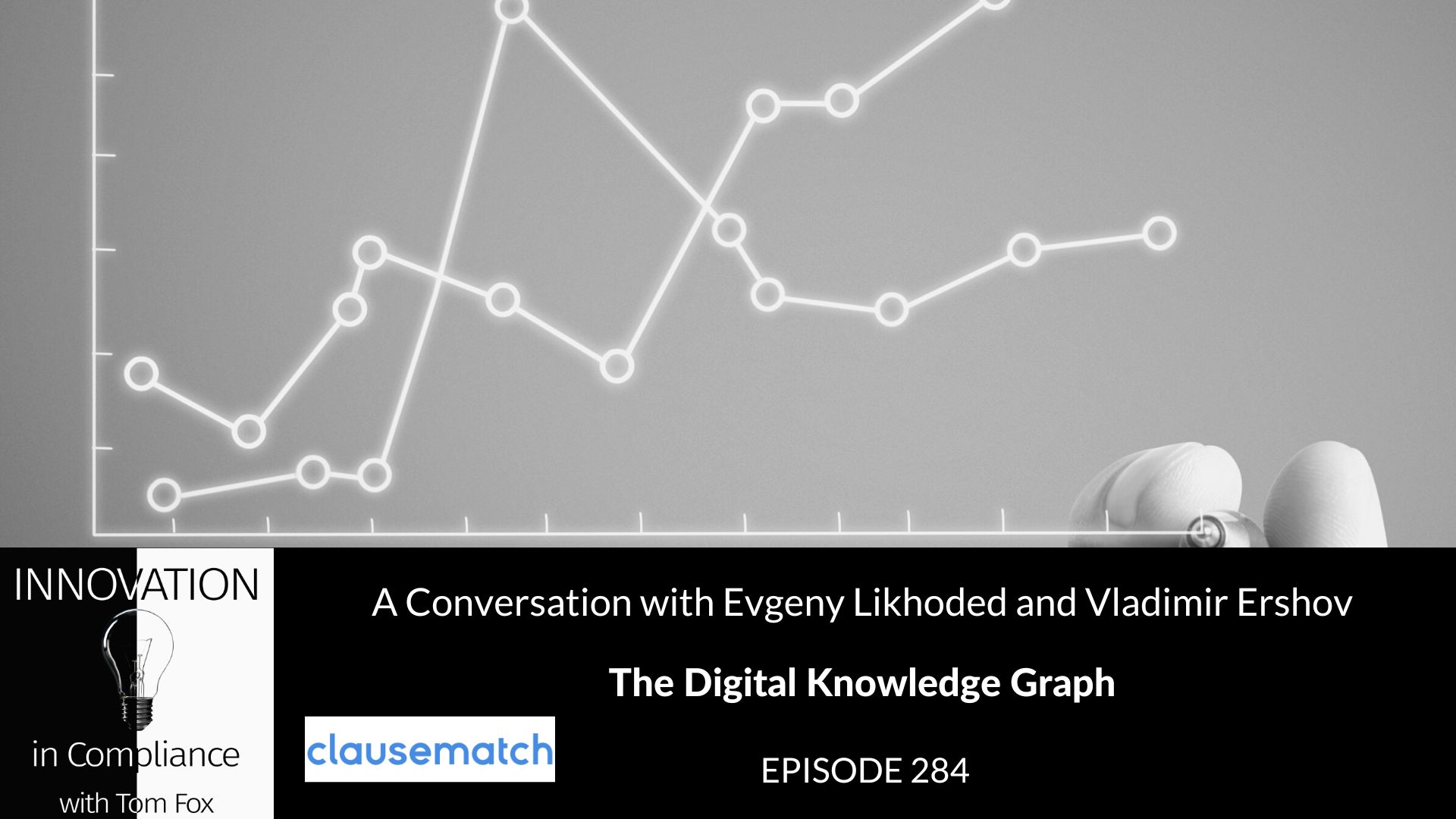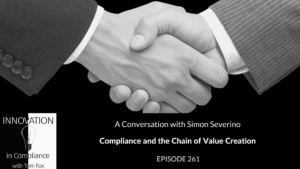
This week’s guests are Evgeny Likhoded, CEO and founder, and Vladimir Ershov, Head of Data Science, of Clausematch. They join Tom Fox to talk about a groundbreaking new innovation, the Digital Knowledge Graph in open source. Learn how this game-changer is revolutionizing the way compliance is managed and what it means for industries, companies, and governments around the world.
Evgeny Likhoded is the CEO and founder of Clausematch, a global compliance and regulatory technology company. He started Clausematch to digitize and structure regulation and help regulators to innovate in the space. Jay has worked to solve a common problem in compliance – managing compliance documents and compliance content. He has brought all of the workflow and content management under one platform to provide compliance professionals a way to collaborate on content in real time.
Vladimir Ershov is the head of Data Science at Clausematch. He has been working in the field of data science for four years and previously worked at Apple. Vladimir is passionate about semantic linkage for law documents and was excited to join Clausematch four years ago to continue his work in this field.
You’ll hear them discuss:
- The process of developing the Clausematch Knowledge Graph took a year with involvement from multiple teams and experts in the regulatory field.The process included discussions with regulatory experts, data preparation, model training and evaluation, and integration with Clausematch’s tools.
- The key idea behind Clausematch was to capture data in a structured form from the start, allowing for more to be done with the data.
- Clausematch was pitched to several financial services regulators, including FCA and ADGM, as a platform for tagging regulation text through expert work and machine learning models.
- The open source Knowledge Graph generated by Clausematch can be used by other companies and regulators to automatically analyze regulations.
- The structured regulations can also be applied to a financial institution’s internal compliance documents to identify gaps and contradictions in their policies.
- The Knowledge Graph helps digitize the meaning of regulations.
- The models can be used to look for patterns in regulations and to show regulators if internal policies are compliant with regulatory rules.
- The ultimate goal is a world where every regulation is structured and consumable via API. The release of the Knowledge Graph in open source will help reach the goal faster.
- Knowledge Graph technology is relevant to compliance technology. Historically, compliance solutions have been focused on formalizing rules and processes into a framework through manual means. Knowledge Graph technology automates the process of structuring data and extracts entities and obligations to form the framework.
- Neural network models or reinforcement learning agents can be run on top of the extracted graph to look for compliance patterns.
- The knowledge graph technology will be available on Clausematch.com and GitHub, and a scientific paper with more information will be released.
- The graph structure is important in compliance due to the need for exact inference in compliance, unlike the correlation approach in language models like GPT.
KEY QUOTATIONS:
“There is a principal flow in the models like ChatGPT and other language models which are based on correlation approach… [but] in the compliance field we need causation, we need exact inference and that’s why the graph structure is extremely important to be able to build the automation for the compliance.” – Vladimir Ershov
Resources
Evgeny Likhoded | LinkedIn
Vladimir Ershov | LinkedIn






